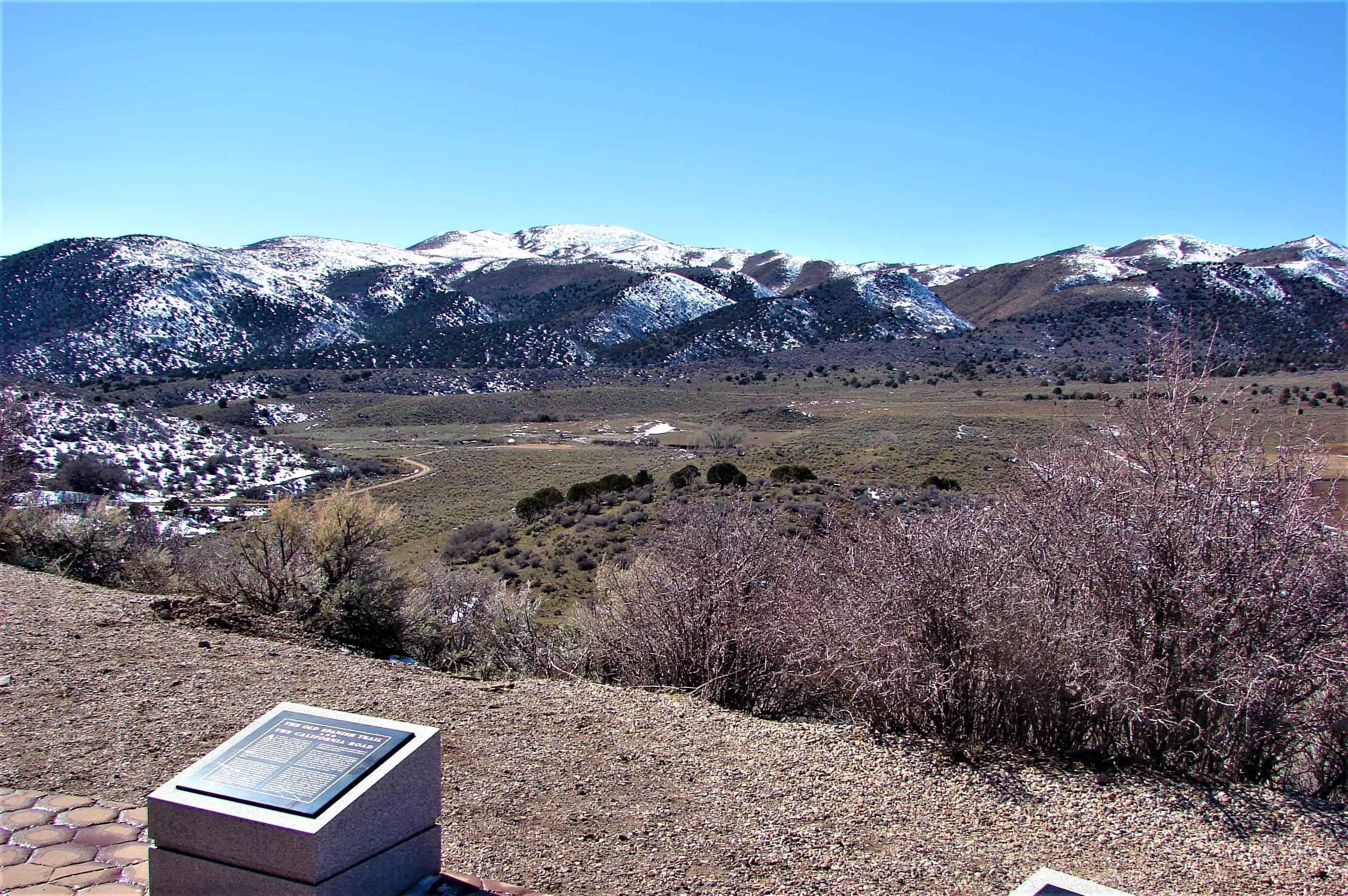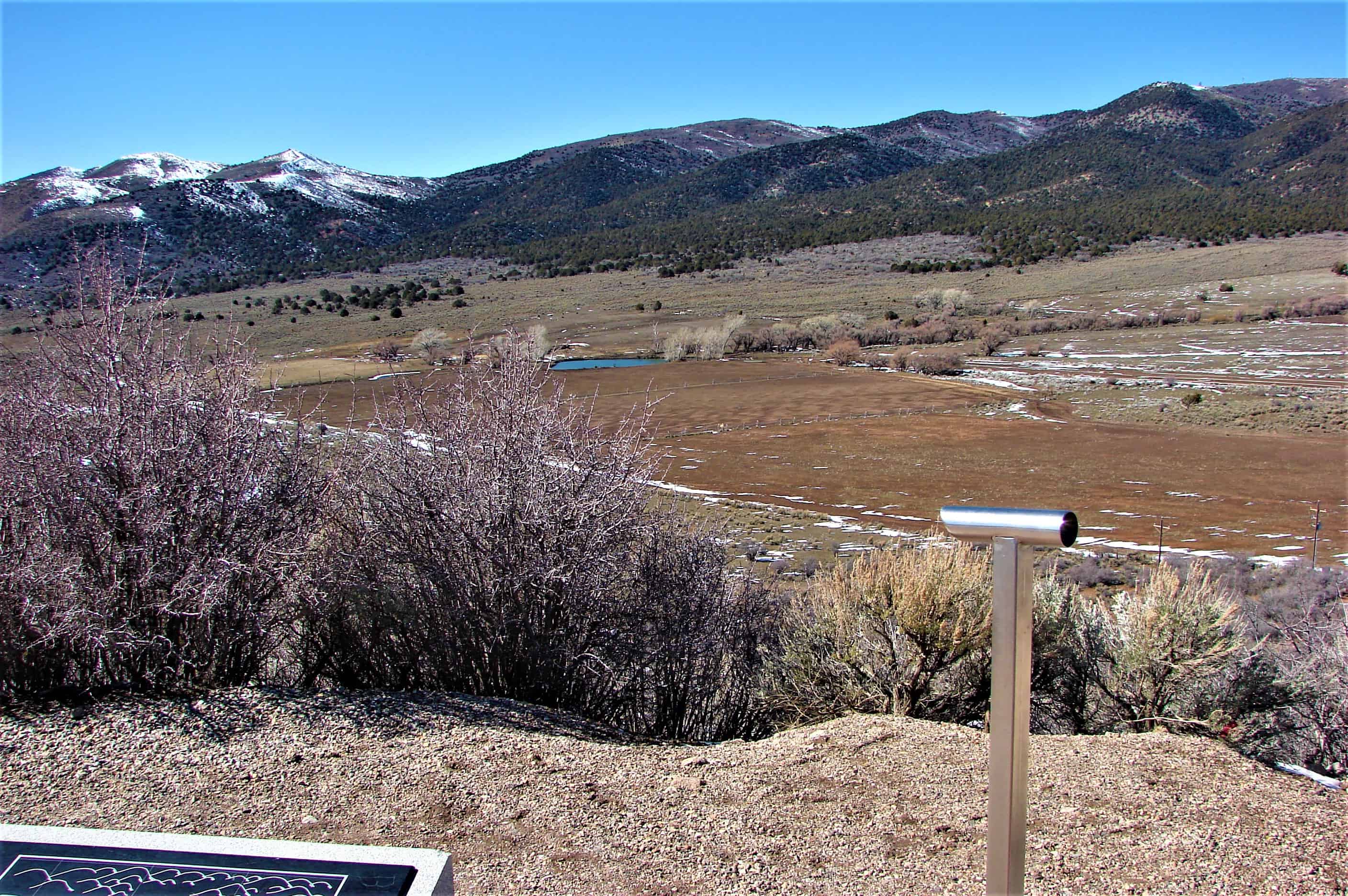Tags

This page is for the Historic Marker that was located here, for a more detailed history of the Mountain Meadows Massacre visit this page.
SUP/UPTLA Marker #17

Location: <<Monument is retired)>> This plaque is now in the LDS Museum of Church History and Arts. It was moved when the monument on which it was mounted, was destroyed when remains of the victims were dug up accidentally and reburied in 1999, and new monuments were built and dedicated.
Rededicated 1990, removed in 1999.
The plaque reads: MOUNTAIN MEADOWS
A favorite Recruiting place on the Old Spanish Trail.
In this vicinity, September 7 – 11, 1857, occurred one of the most lamentable tragedies in the annals of the west. A company of about 140 Arkansas and Missouri emigrants led by Captain Charles Fancher, enroute to California, was attacked by white men and Indians. All but 17, being small children, were killed. John D. Lee, who confessed participation as leader, was legally executed here March 23, 1877. Most of the emigrants were buried in their own defense pits.
This monument was reverently dedicated September 10 – 1932, by the Utah Pioneer Trails and Landmarks Association and the people of Southern Utah.
The Mountain Meadows massacre was a series of attacks on the Baker–Fancher emigrant wagon train at Mountain Meadows in southern Utah. The attacks culminated on September 11, 1857, with the mass slaughter of most in the emigrant party by members of the Utah Territorial Militia from the Iron County district, together with some Paiute Native Americans.
The wagon train, mostly families from Arkansas, was bound for California on a route that passed through the Utah Territory during a conflict later known as the Utah War. After arriving in Salt Lake City, the Baker–Fancher party made their way south, eventually stopping to rest at Mountain Meadows. While the emigrants were camped at the meadow, nearby militia leaders, including Isaac C. Haight and John D. Lee, made plans to attack the wagon train.
The militia, officially called the Nauvoo Legion, was composed of Utah’s Mormon settlers (members of The Church of Jesus Christ of Latter-day Saints or LDS Church). Intending to give the appearance of Native American aggression, their plan was to arm some Southern Paiute Native Americans and persuade them to join with a larger party of their own militiamen—disguised as Native Americans—in an attack. During the militia’s first assault on the wagon train, the emigrants fought back and a five-day siege ensued. Eventually fear spread among the militia’s leaders that some emigrants had caught sight of white men and had likely discovered the identity of their attackers. As a result militia commander William H. Dame ordered his forces to kill the emigrants.
By this time the emigrants were running low on water and provisions, and allowed some approaching members of the militia—who carried a white flag—to enter their camp. The militia members assured the emigrants their protection and escorted them from the hasty fortification. After walking a distance from the camp, the militiamen, with the help of auxiliary forces hiding nearby, attacked the emigrants. Intending to leave no witnesses and thus prevent reprisals, the perpetrators killed all the adults and older children (totaling about 120 men, women, and children). Seventeen children, all younger than seven, were spared.
Following the massacre, the perpetrators hastily buried the victims, leaving the bodies vulnerable to wild animals and the climate. Local families took in the surviving children, and many of the victims’ possessions were auctioned off. Investigations, temporarily interrupted by the American Civil War, resulted in nine indictments during 1874. Of the men indicted, only John D. Lee was tried in a court of law. After two trials in the Utah Territory, Lee was convicted by a jury, sentenced to death, and executed by Utah firing squad on March 23, 1877.
Today historians attribute the massacre to a combination of factors, including war hysteria about possible invasion of Mormon territory, and hyperbolic Mormon teachings against outsiders which were part of the excesses of the Mormon Reformation period. Scholars debate whether senior Mormon leadership, including Brigham Young, directly instigated the massacre or if responsibility lay with the local leaders in southern Utah.
See other historic markers in the series on this page for UPTLA/SUP Markers.



